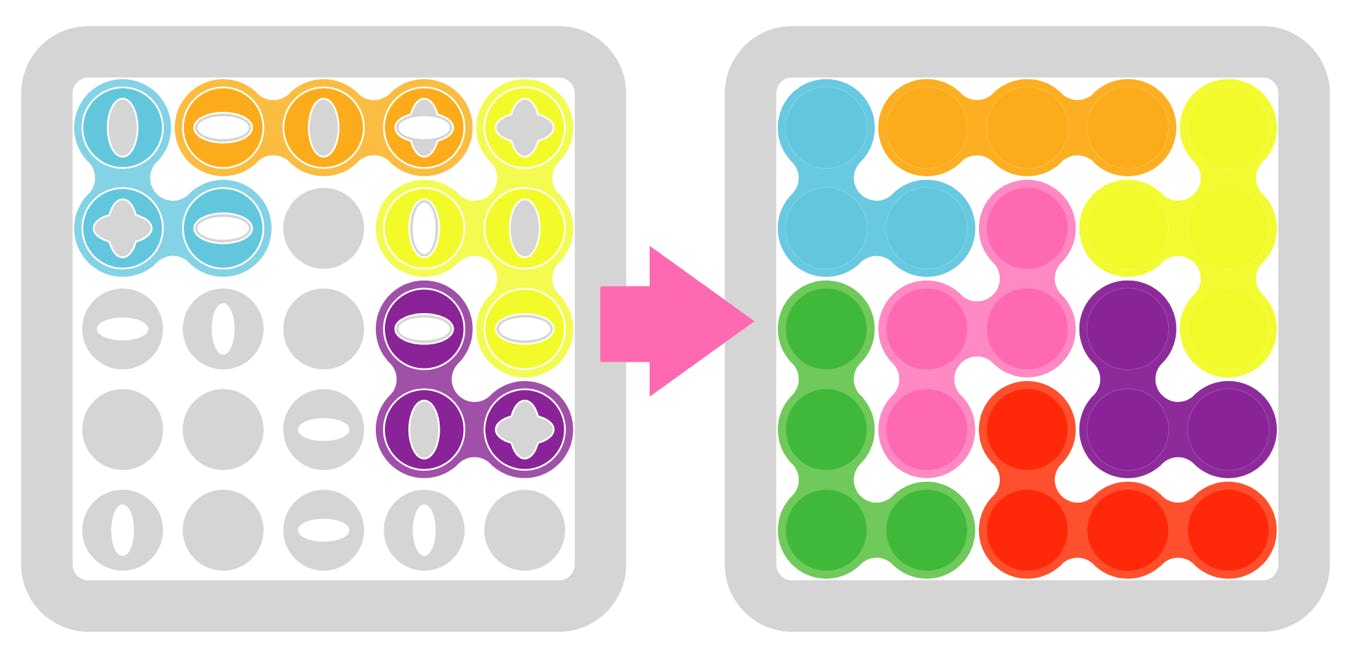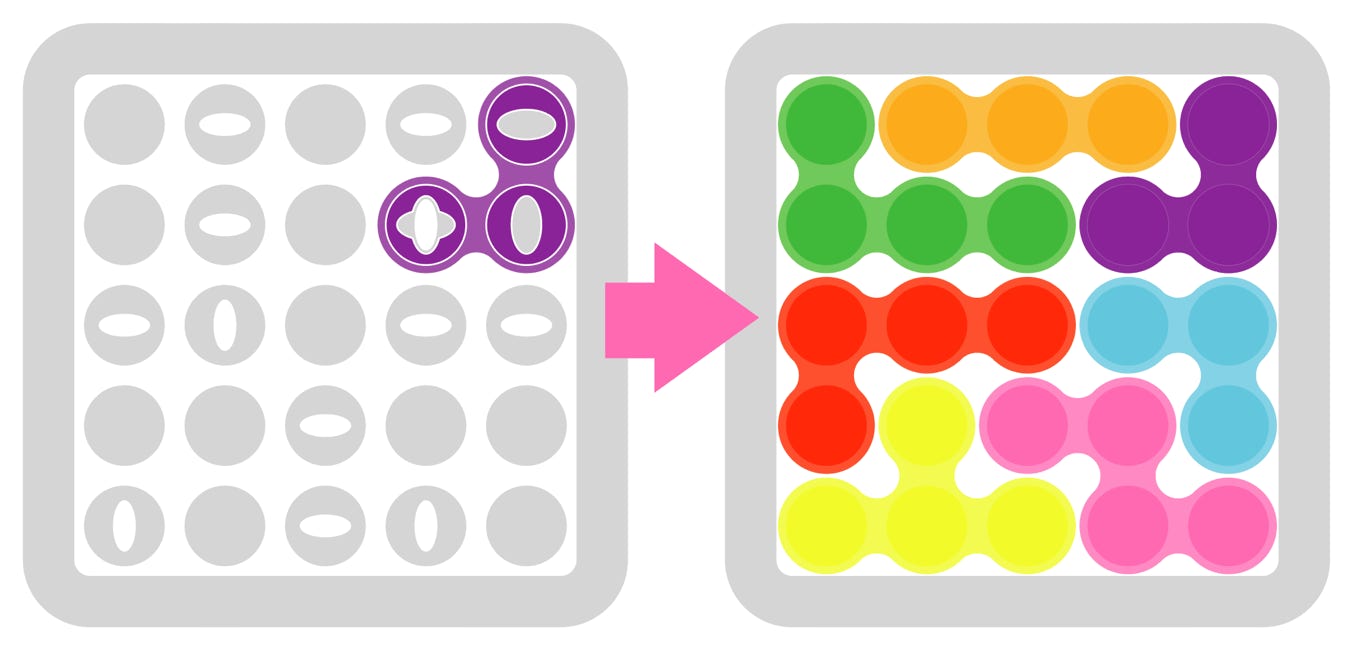
IQ-Candy
The story behind the creation of IQ-Candy
Raf Peeters, January 2015
IQ-Candy is a new puzzle game I designed this year for SmartGames. Although there is also “IQ” in the name of this game, it doesn’t have the same size as the other IQ-games. It’s still a very compact game, but larger and square (similar to Back2Back, Bend-it, Temple Trap, etc).
But apart from the size, the concept is very much an IQ-puzzle. The object of the game is also to place all puzzle pieces on the game board. As explained earlier on the page of IQ-Blox, every IQ-game I design comes with different constraints. This way challenges have only one solution and each game feels different. The additional constraint in IQ-Candy is the game board itself. It has fixed pins in specific locations. Some pins have a vertical shape, some a horizontal. Each puzzle piece has holes that fit over these pins. Vertical holes in the puzzle pieces fit over vertical pins on the game board, horizontal holes over horizontal pins. The cross shaped holes fit over both horizontal and vertical pins. Some parts on the game board don’t have any pins and can of course be covered by any part of a puzzle piece. A puzzle piece only can be placed on the grid, if all pins fit inside the right shape of holes in the puzzle piece above. But as soon you rotate a puzzle piece the orientation of the holes also changes, creating different options.
FOOD FOR THOUGHT
In the beginning the game was named IQ-Bytes, because the shape of the holes reminded me to how information is stored on a optical drive when you look at it through a microscope. But when the first samples in translucent colors arrived, one of my colleagues found that the puzzle pieces looked like candy. So we wanted to name it Brain-Candy, something that pleases the mind, similar to the word eye-candy. But unfortunately this name was already in use and so finally IQ-Candy was chosen. Because of the looks and name we even explored a candy bag for the packaging, but eventually we settled with a more classic cardboard packaging, although the design is still inspired by the way candy is often packed. In a way, finding the right box for this game proved also to be a real “packing problem”.
The most important task when developing this puzzle game, was to find the best position of the fixed pins on the game board:
• too many pins would limit the number of possible packings, resulting in too few challenges and less variation
• we also tried cross shaped pins, but these limited the number of packings even more
• too few pins would limit the number of challenges with only 1 pieces shown in the challenge.
The game includes 60 challenges. The biggest advantage of putting so many constraints in the game board by adding fixed pins, is that you don’t need a lot of set up. Many challenges require you to only place 1 or 2 puzzle pieces before you can start. It also means that these puzzle are not extremely hard to solve, that’s why this game doesn’t include a wizard level. Solutions only show the color and shape of puzzle pieces, because sometimes pieces can be flipped over, so that puzzle piece is still on the same place, but the vertical and horizontal holes are not. So each challenge has a unique solution for the place of each puzzle piece, except for the position of the holes inside some puzzle pieces.

top: example of a Junior challenge and solution

top: example of a Master challenge and solution
GAME RULES IQ-CANDY
Fit all of the candy-colored puzzle pieces onto the game board.
Important! Make sure that the board is placed in the correct position before starting the game. The corner on the grid with a pin should always be placed in the bottom left.
1) Set up each challenge by placing selected puzzle pieces on the game board as indicated. The position of these pieces cannot be changed.
2) Fit the remaining puzzle pieces on the game board. Puzzle pieces can be placed on either side and in any orientation - if the pins on the game board allow their placement. Horizontal pins only fit in horizontal holes, while vertical pins fit only in vertical holes. Both pins fit inside puzzle pieces with cross-shaped holes.
3) You have found the solution when all colored puzzle pieces fit on the game board. There is only one solution, found at the end of the included booklet.
Website ©2015 Raf Peeters
Products and images: © Smart
